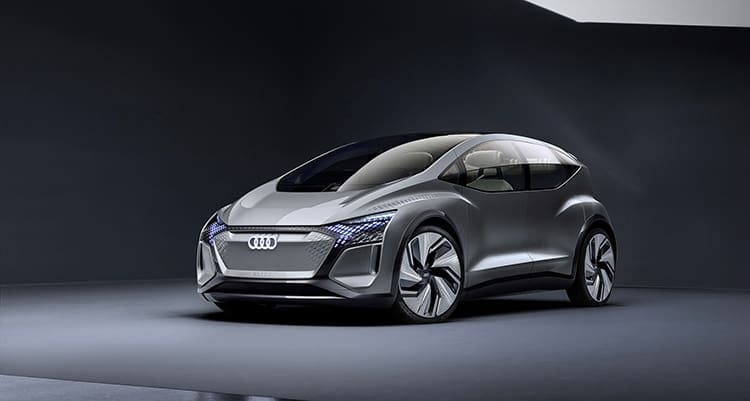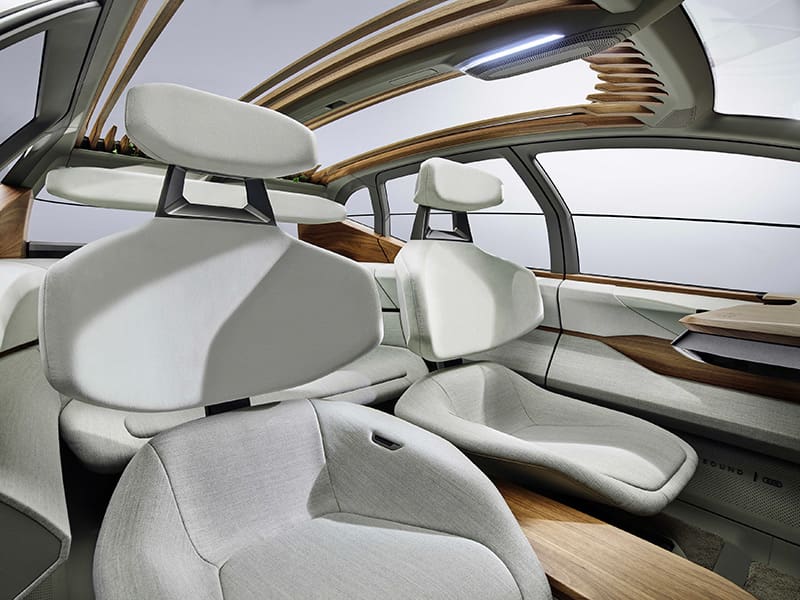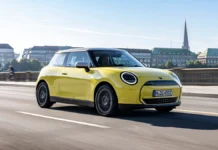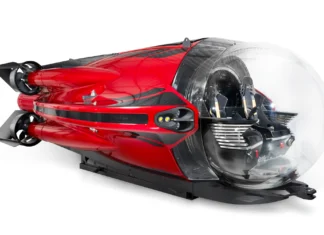At Auto Shanghai 2019, Audi is introducing a visionary mobility concept for the megacities of the future: The showcar, known as the Audi AI:ME, offers compact dimensions, a spacious, futuristic interior, and the ability to drive autonomously.
Compact architecture, electric drive: The concept
With an exterior length of 4.30 meters (14.1 ft) and a width of 1,90 meters (6.2 ft), the Audi AI:ME takes up as much traffic space as a present-day compact car. However, the wheelbase of 2.77 meters (3 ft) and the height of 1.52 meters (5 ft) indicate interior dimensions that are more likely to be found in the next higher class at least. This is made possible by the architecture of the electric drive. It allows for short overhangs and a large-volume interior without a propeller shaft tunnel. The drive unit is positioned on the rear axle and mobilizes 125 kW (170 metric hp).
For the occupants, the compact drive package offers a maximum amount of objectively available space, spatial comfort, and a great deal of variability. The Audi AI:ME is designed as a 2 plus-x-seater. Its layout relies on a variety of configurations for seat positions and stowage space. While only the individual seats at the front will be used during most journeys, the car offers space for up to four people in the front and on the rear bench if necessary.
Automated driving at level 4: Relax while gliding through the city
What is long established in rail transportation and even aviation is at the threshold of a breakthrough in automotive transportation—automated driving. The Audi AI:ME is designed for use in the city and for driving at what is known as level 4. This is the second-highest level on a standardized international scale for increasing automation.
Although systems with level 4 do not require any assistance on the part of the driver, their function is limited to a specific area—such as highways or a specially equipped area in inner cities. In these places, the driver can completely transfer the task of driving to the system. The driver needs to resume the task only when the car leaves the area defined for fully automated driving. By contrast to the Audi AIcon, a vehicle with level-5 function that is always fully autonomous, the Audi AI:ME is therefore equipped with the traditional steering wheel and pedalry control elements in addition.
This means that the car, as well as the remaining road users, will drive automatically in a defined traffic area equipped with the corresponding infrastructure in the future. Self-regulating and self-controlling flows of traffic allow the vehicle to glide along calmly, avoiding heavy longitudinal or lateral acceleration. This is an important requirement for the occupants of the car to be able to detach themselves mentally from the traffic around them.
Luxurious refuge and high-tech control center: the interior
Audi AI fundamentally changes how automobiles are used and significantly enhances the time spent on board. The car is increasingly becoming a “third living space” alongside our homes and workplaces. It is thus only consistent that the Audi designers did not subordinate the interior of the Audi AI:ME to the shape of the body. On the contrary. They prioritized the interior and made it the core of the whole vehicle.
The focus here is less on the traditional connection between driver and vehicle—steering wheel, instruments, pedals—and more on the time spent in the automated vehicle. This is why these control elements are retracted with an elegant and sophisticated choreography and are then almost fully concealed by a stowage compartment with a surface made of open-pore walnut wood.
See and be seen—the lighting
With the self-driving cars of the future, headlights will have a part-time job at best because the driver will be concerned with other things most of the time and will rarely need the road to be brightly illuminated. It is another function of the lighting that takes on a more important role here: communicating with other road users. The Audi AIcon already demonstrated how digital matrix luminous surfaces can use moving graphics to output clearly understandable signals relating to the driving condition and, of course, also to mark the vehicle itself.
The Audi AI:ME takes this approach one step further: As road users come even closer in the city, the traditional positions of the front and rear lights are often not visible. Because of this, Audi lighting designers integrated LED elements in the body in an unusually high position above the wheel wells, where they are visible from all angles. This 360-degree communication is an important additional safety feature for pedestrians or cyclists.
Like in the AIcon, the LED units at the front and the micro matrix projectors can use easily identifiable symbols to signal to pedestrians when the AI:ME is letting them cross the road, for example. The graphics can be projected onto the road or a wall. This function is also used to illuminate the door area to ensure that occupants can enter or exit the vehicle safely and also to mark the vehicle for other road users. The matrix projectors can also provide additional safety to other road users with weaker lighting by automatically illuminating their surroundings.
The Audi AI:ME features a further innovation: It can interpret signals from other vehicles and use its own lighting technology to amplify them if this benefits the surroundings. Example: A vehicle driving in front indicates danger with faint hazard warning flashers. The AI:ME can detect this signal and amplify it with projections and the LED units on the body so that it is clearly visible to all road users.
Mobile for hours: the drive architecture
Audi took a targeted approach to tailoring the specifications of the AI:ME to the scope of use of a city car. This means that extreme acceleration values and top highway speeds are just as obsolete as high cornering speeds and ranges that are suitable for driving long distances. An automobile like the AI:ME will drive predominantly in the speed range between 20 and 70 km/h (12.4 and 43.5 mph) and will often have to remain mobile for hours at a time without charging. However, long ranges in terms of kilometers are less relevant than the ability to make good use of the operating time.
The engineers therefore drew on a comparatively simple, yet light, basic configuration. A battery unit with a storage capacity of 65 kilowatt hours is sufficient for meeting these requirements. A permanently excited synchronous motor that can mobilize 125 kW (170 metric hp) if necessary operates in the area of the rear axle of the AI:ME. A fraction of this is usually sufficient for keeping up with the flow of city traffic. Thanks to brake energy recuperation and its comparatively low weight, the Audi AI:ME exhibits extremely low energy consumption even in city traffic.
















